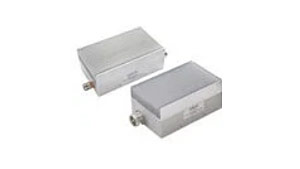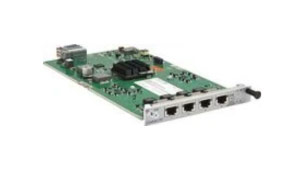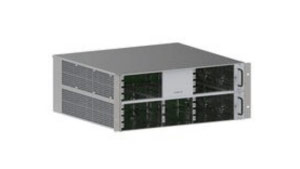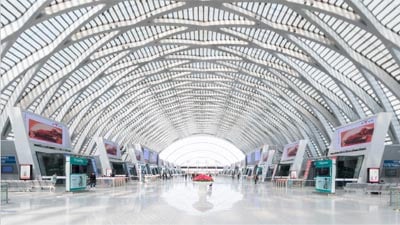In-building cellular: the Fact File
Introduction to in-building cellular
As cellular technology has developed from the initial 1G technology in the early 1980s to the super-fast 5G networks of today, it has become ubiquitous and pervasive. Businesses rely on it, yet its usefulness has always been subject to its coverage.
In buildings of any kind, walls act as a barrier to any RF signal. This problem has been exacerbated in recent years. Not only does 5G make greater (although not exclusive) use of higher frequencies that are more easily blocked by physical barriers, modern buildings are frequently designed with climate control in mind; and, while low-emissivity glass may help reduce heating and cooling bills, it also reduces the strength of phone signals.
The answer is to extend the reach of the carrier signal via in-building cellular (aka distributed antenna systems—DAS). Unlike a wide outdoor “macro” cell site, an in-building cellular network is designed to cover indoor spaces divided into many smaller sub-spaces, i.e., floors and rooms. A single node, even at high power, would struggle to propagate an RF signal through multiple floors and walls. In such a topology, coverage is more naturally provided by multiple nodes distributed among the different spaces.
Higher cell frequencies are blocked by building materials
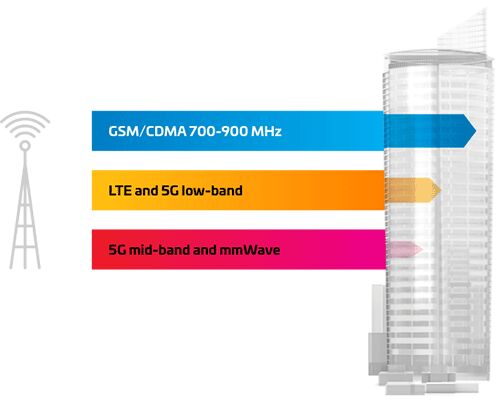
Low-E glass windows commonly reduce signal strength by a factor of 1,000, nearly equivalent to a 1/8 inch (3 mm) thick aluminum plate.
Source: Radio and Microwave Frequency Attenuation in Gloss, Vitro Architectural Glass (formerly PPG), October 2016
Would you like to read offline?
Download a PDF version of this article to read again later.
Stay informed!
Subscribe to The Enterprise Source and get updates when new articles are posted.
Evaluating the need for in-building cellular is mainly a function of volume and value. One factor is the number of people in the building and the intensity of their mobile usage. Another is the value of that mobile usage to the business in question. In some cases, such as sports arenas, the value of the mobile usage is high, and the number of users is enormous. Conversely, in scenarios such financial services, law firms, and other high-end offices, highly compensated professionals are fewer in number but very high in value.
The following types of buildings are among the most commonly served by in-building cellular:
- Hotels
- Conference venues
- Sports stadiums
- Shopping malls
- College campuses
- Hospitals
- Professional offices
Do you need in-building cellular?
It may be useful to start with these questions:
- What is the existing quality of mobile coverage in your building? Is there sufficient voice clarity and data speed, from each operator?
- Do employees need their mobile devices to perform their job functions?
- Do visitors or customers need their mobile devices as part of their purchase process or customer experience?
- How large is the building? How many people occupy it?
Most enterprise uses of in-building cellular fall into one of three use cases:

Multi-operator commercial cellular
Giving employees, customers, visitors high-quality access to their mobile service provider services.

Business-critical private cellular
Specialized business applications with unique requirements that are not well served by other network types.

Emergency response wireless
Helping first responders communicate when they are inside your building.
CommScope has been involved in the implementation of different types of in-building cellular networks in a variety of countries, industries and building types; these are real-life examples of businesses that have used in-building cellular to respond to a pressing business need.
Multi-operator commercial cellular

Deutsche Bank, London, UK
Coverage across large multi-building high rise complex.

Loma Linda University Medical Centre, California, U.S.
Provide excellent mobile experience for staff, patients, visitors. Challenging installation and coverage environment.

Riyadh Metro, Saudi Arabia
Multi-operator system for major metro network including 85 stations, 11 park and rides, 40 km of tunnels.

Hospital, Milan, Italy
Large, multi-building campus with indoor and outdoor spaces.

Hotel and luxury multi-dwelling residence, Spain
Provide superior commercial cellular coverage throughout property without disrupting historic building aesthetics.
Commercial cellular and emergency response wireless

Consumer goods manufacturer, Denmark
Serve over 2,000 employees across large office campus.

Hyperscale social media provider, Denmark and Ireland
Provide reliable commercial cellular coverage across huge facilities. Standardization across multiple country installations.

Memorial Health System, Michigan, U.S.
Rapidly extend broadband coverage to outdoor COVID-19 triage tents, to support essential administrative and diagnostic communications.

Fortune 50 Technology Firm, U.S.
Streamline deployment and connectivity of IP Video cameras and other physical security and safety solutions.
Cellular and Wi-Fi have coexisted for decades and, to date, neither has replaced the other. On the contrary, both have flourished, and it is widely accepted that there will continue to be the need for multiple different wireless technologies. While Wi-Fi and cellular technologies have similarities, they largely support different use cases. More often than not, this has made them complements rather than substitutes.
![]()
Cellular
Cellular, operating in the licensed spectrum, implies the presence of a spectrum owner, in the form of a mobile network operator (MNO). For the subscriber, the advantage is that connection to the network is automatic, universal, and pervasive. Cellular technology also has greater range to cover large spaces, and it is inherently mobile, meaning users’ sessions are maintained even as they move between serving radios. Mobility is one of the features that makes cellular suitable for voice calling, since voice call user experience is disrupted by session interruptions whereas many data experiences (e.g., email) are not. Cellular is also the technology on which emergency services organizations (fire, police, ambulances) have standardized for their communications.
Find out more about ERA®, CommScope’s in-building cellular solutions
![]()
Wi-Fi
In contrast, Wi-Fi operates in the unlicensed spectrum, enabling a private enterprise or homeowner to create a network without reliance on a commercial service provider. As such, it is the default access to the enterprise or home network. It is in fact valued for its ability of self-deployment and absence of subscription cost. Wi-Fi technology provides unmetered high-speed connectivity and enables user data collection by entities other than an MNO. Note, however, that access to Wi-Fi is not automatic for everyone—only for regular authorized users. New or visiting users, if allowed, need to log in.
Find out more about RUCKUS®, CommScope’s wireless enterprise networking solutions
Earlier implementations of in-building cellular may have had a reputation for being expensive and cumbersome to design, implement and operate. However, in recent years, newer generations of DAS have used digital technology to reduce the footprint, make better use of fiber infrastructure, and permit greater flexibility in the physical placement of system elements.

How digitization has simplified the deployment and use of in-building cellular
ERA® CPRI “digital donor” technology is a great example of how digital systems have made DAS implementation both simpler and more efficient than traditional analog DAS. CPRI (pronounced “sip-ree”) stands for Common Public Radio Interface—a protocol for digital transmission or radio frequency signals. See the interactive graphic below to see an overview of its benefits.
CommScope’s all-digital ERA distributed antenna system helps make in-building wireless simple and economical, operating on standard IT infrastructure—Category 6A and fiber. These solutions help operators, neutral hosts and enterprises provide high capacity with extensive in-building coverage.
Features and benefits
ERA evolves the conventional distributed antenna system (DAS) architecture by helping organizations:
- Move all baseband functions across multiple buildings to a single, streamlined headend or even to the operator’s facilities—reducing the on-site system footprint to save real estate.
- Take advantage of an all-digital CPRI baseband interface that eliminates the need for analog-to-digital conversions, further reducing head-end size and power requirements.
- Adjust capacity across the network by sector or channel through a web-based drag-and-drop interface.
- Select from among a wide range of access points that offer different power levels, copper/fiber connectivity, power over Category 6A cable, and embedded MIMO support. Outdoor and plenum ratings allow deployment in harsh environments and concealed spaces.
- Comprehensively monitor and manage deployments using CommScope’s proven AIMOS management system.
ERA makes in-building wireless solutions simple to install, easy to manage and economical to operate—all while giving operators, neutral hosts and enterprises the room they need to grow as new technologies and applications come to market.
CPRI Baseband Interface
Through a collaboration with Nokia, ERA features a direct CPRI interface to Nokia’s AirScale baseband unit (BBU). This integration collapses the functionality of up to six remote radio units and their associated cabling into a single 300 x 145 mm (12 x 6 inches) card, greatly reducing head-end space and power consumption.
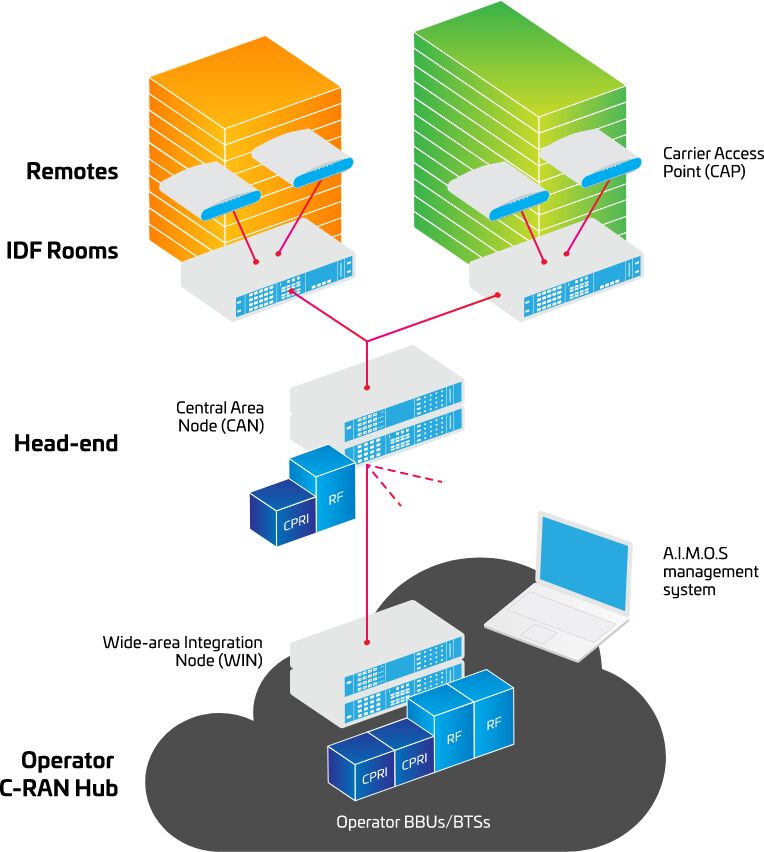
Safety First
Emergency responder radio coverage is often a requirement in new construction—and sometimes mandated even for existing buildings. ERA offers specialized access points that support popular public safety frequencies, including band 14 for FirstNet in the U.S. These remotes are available in different transmit power levels to help address regional differences in typical building sizes.
At the headend, CommScope offers fire and water protective enclosures meeting NEMA 4 and NFPA standards. CommScope also offers a range of multi-band RF repeaters designed for public safety applications. These can be used as a signal source to ERA or on their own with direct coaxial connection to multiple antennas.
Future-Ready
Enterprises, property owners, neutral hosts and network operators need to know that their investments today will prepare them for tomorrow’s needs. In-building wireless capabilities are increasingly called upon to support emerging smart building and campus services and the internet of things (IoT). They also need to support technology evolution to 3.5 GHz bands to support 5G New Radio in Europe and Asia, and Citizens Broadband Radio Service (CBRS) in the U.S.
ERA’s all-digital, frequency-agnostic system architecture ensures the system will be able to support new services in existing and new bands, including CBRS and sub-6 GHz 5G NR. ERA’s multiplexed fiber fronthaul can also be shared with other communication services. And, as usage patterns change, capacity can be re-allocated through a web-based drag-and-drop software GUI rather than physical re-wiring.
System architectures vary, but most distributed antenna systems include the following basic elements:
1. A headend
This is where the operator base stations (signal sources) feed into the DAS. The function of the headend is to convert RF or digital base station signals into a format and power level that can be distributed to the many antennas around the building. The headend is typically located in a central building main distribution frame (MDF) but, with ERA, it can also be virtualized onto a central campus location, the operator’s nearby hub, or even to multiple locations. This flexibility saves on-premises real estate while allowing operators to connect in the way that is most efficient for them.
2. Fronthaul distribution
A network of cabling and intermediate nodes that spread throughout the building or campus being served. Because ERA is entirely digital, it can make efficient use of fiber and copper connections—sometimes even being able to leverage pre-existing cabling.
3. Remotes and antennas
These are the outermost points of the DAS, where the signal is converted from digital back to analog RF for over-the-air transmission to smartphones, tablets and other connected devices.
For more details, see CommScope’s ERA Digital Distributed Antenna System
5G is just beginning to achieve critical coverage around the world and will increase in importance over the next few years. The adoption of 5G and its undoubted potential has shone the spotlight on in-building cellular, since these technologies are developing in parallel.
The digitization of DAS systems is a timely development, since it is helping ensure that the promise of 5G is fulfilled. It is likely, therefore, that in-building cellular will be of significant strategic interest to network planners for many years to come.
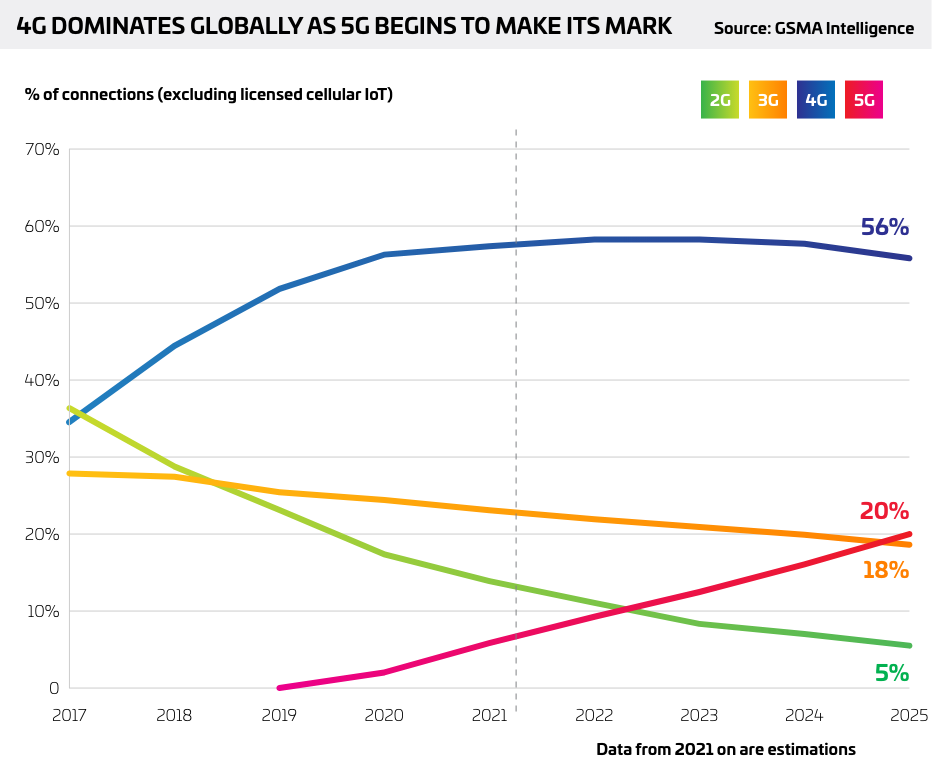
Watch to hear more about in-building cellular trends from our experts:
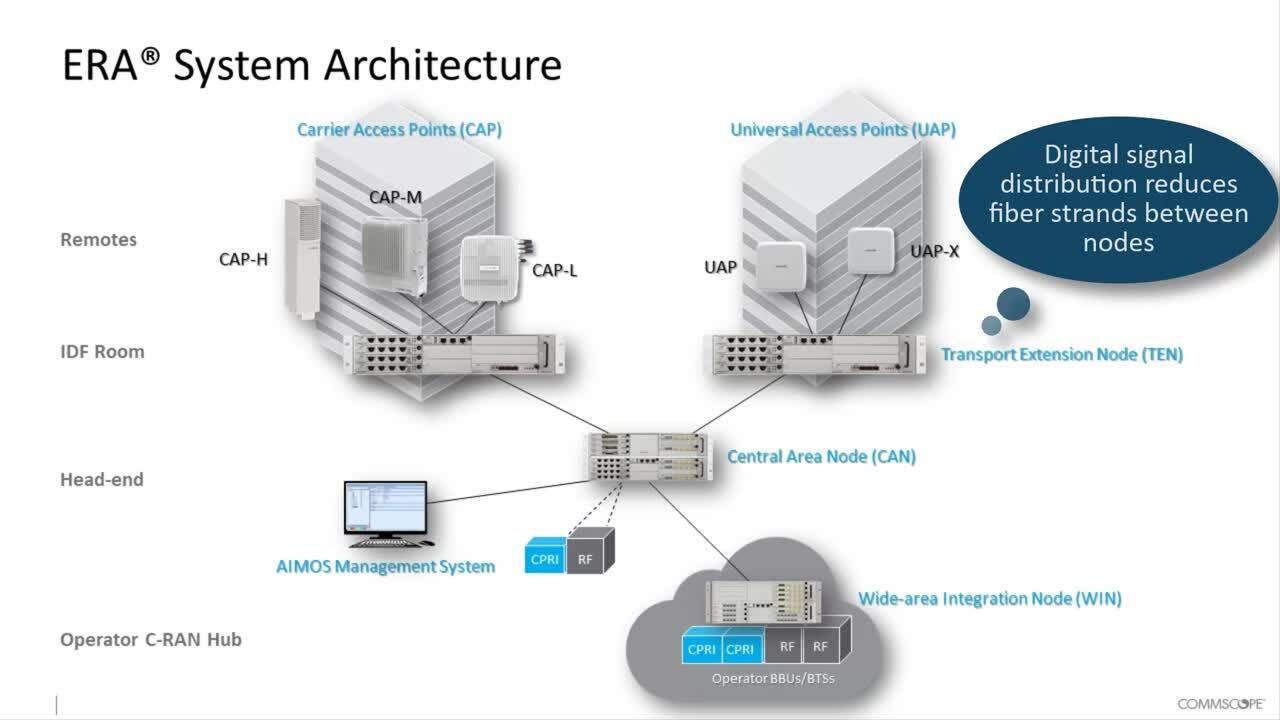
Resources and Case Studies
Why Home Networks?
![]()
All-digital design
All-digital means you make changes in software, not the hardware—so it’s simpler to configure and maintain. Plus, our solutions deploy over existing Category 6A, fiber cabling and Ethernet switching to save time and money.
![]()
5G built in
CommScope solutions allow you to support 3G and 4G services today, then gracefully evolve to 5G when you’re ready.
![]()
Market leader
Independent industry researchers consistently rank CommScope as the global market leader in distributed antenna systems. (Source: Mobile Experts Inc., Distributed Antenna Systems, 2020.)
Brochure
ERA digital distributed antenna system
Brochure
In-building wireless professional services
Installation Guide
SYSTIMAX cabling design and installation guidelines for the ION-E solution
Ordering Guide
In-Building Wireless Passive Products and Antennas
In-building cellular: how will 5G reshape your business?
We explore how to unlock the full potential of 5G in the enterprise.
